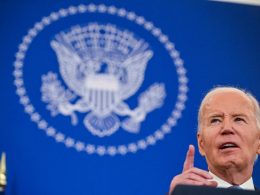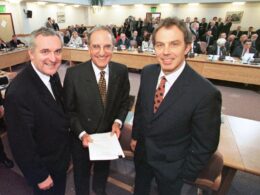This Earth Week, I want to reflect on an exciting evolution happening in the field of environmental protection. Fifty-five years ago, when the United States celebrated its first Earth Day, environmental protection was about conserving natural lands and preventing industrial pollution.
We had few tools to eliminate the sources of pollution, but we could regulate incumbent industries and force them to invest in controls to minimize harm. Industry and economic development were on one side, environmental protection and public health on the other. Many of our political, environmental, and business leaders came of age in this framework.
Over the last decade, the advent of low-cost, reliable renewable energy technology has changed the equation. Today, environmental protection is about more than just regulating polluting industries. We can actually make these industries stronger and more competitive by replacing their expensive and polluting fossil fuel inputs with clean, renewable, locally generated electric power.
Once renewable energy facilities are constructed, their ongoing costs can’t be beat; the wind and sunshine are free, abundant natural resources that are immune from price volatility. The path to affordable, abundant clean power is right in front of us; smart public-private partnerships that allow New York to unleash and harness private sector innovation and investment to rapidly deploy renewables.
In 2024, New York installed 1.24 gigawatts of rooftop and community solar. These projects are already delivering direct utility bill savings to hundreds of thousands of homes and businesses while lowering energy costs for all New Yorkers by increasing supply at times of peak demand.
In fact, New York recently surpassed its six gigawatt distributed solar goal more than a year ahead of schedule, and we’re on track to achieve our expanded 10 gigawatt solar goal ahead of schedule and under budget. This success is thanks to smart policies and effective public-private partnership between the New York State Energy Research and Development Authority (NYSERDA) and hundreds of local businesses with thousands of skilled workers that power New York’s distributed solar industry.
The public-private partnerships that catalyzed and sustain New York’s rooftop and community solar programs are the envy of the nation. This successful collaboration should be sustained for distributed solar, and should be expanded to support other clean energy sectors.
Seizing this opportunity requires a new approach to environmental protection. In addition to regulating pollution (yes, please!), we need to advance permitting and interconnection reforms and sustain programs to unleash New York’s clean energy industry, attract investment, and accelerate cost-effective deployment.
The best thing about embracing distributed solar development and cutting red tape is that it will lower the cost to deploy projects that protect the environment while lowering energy bills for New York families and businesses. It also benefits New York’s industrial base by providing lower cost electricity to meet growing demand.
New York state Sen. Pete Harckham, chair of the Environmental Conservation Committee, has exemplified a pro renewable energy development approach to environmentalism, including his ongoing effort to modernize New York’s residential solar tax credit and his recent introduction of the Accelerate Solar for Affordable Power (“ASAP”) Act; legislation that promises to accelerate rooftop and community solar deployment and lower costs through interconnection reforms.
The case for deploying these resources is no longer just environmental; if we want to lower New Yorkers energy bills, we need to double down on low-cost renewables and stop letting our hard-earned dollars go up the smokestack.
Many of our political and business leaders today remember America’s first Earth Day 55 years ago. Our motivations to protect the environment may not have changed so dramatically, but we now have new and improved tools to drive progress.
Today, environmental protection versus economic development is a false choice. Environmental protection versus energy affordability is a false choice.
Federal policy uncertainty is a challenge, but New York’s renewable energy industry is stubborn, homegrown and resilient. Regardless of what happens in Washington, cutting through permitting and interconnection red tape to enable rapid and cost-effective solar deployment is a no-regrets move that will help protect the environment, support local businesses, and lower household energy bills in one fell swoop.
This Earth Week, I implore New York’s elected leaders to keep fighting the good fight, and remember — if you embrace clean energy development for environmental progress, you’ll have hundreds of businesses and 178,000 workers in your corner. As the adage goes, many hands make work light. Let’s keep building.
Ginsburg is executive director of New York Solar Energy Industries Association.








